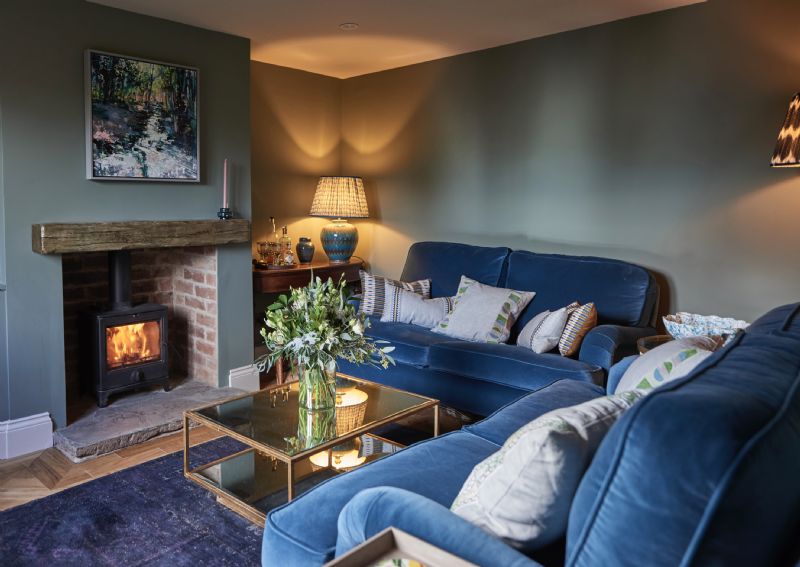- Home
- News, Articles & Reviews
We are hiring! Please click here to join our growing magazine delivery team in Gloucestershire!
Areas
Homes & Gardens
Archive

Choosing colour
All Areas > Homes & Gardens > Interior Design
Author: Lindsey Higgins, Posted: Wednesday, 25th September 2024, 09:00
There is nothing like colour to bring joy to a home; it gives an instant uplift to any room. I often find people are wary of using colour in case they make a mistake, especially if it’s a move away from their usual choices. Here are a few tips to help you look at colour in a different way.
Think about the vibe or atmosphere you want to create. Do you want a calm, relaxing space, a cosy retreat, or somewhere more exciting and uplifting? The less contrast in your colour scheme, the more calming your room will feel. Greater contrast creates more energy. Darker colours work well in rooms with less light and smaller spaces. A room filled with light will work well with lighter paint tones.
Once you’ve chosen the depth of colour, you can start to think about combinations that work well together. This is where choosing colour gets really interesting, so be open-minded and consider unusual colour combinations. There are two books I love and often use as inspiration; The Japanese book ‘A Dictionary of Colour Combinations’ published in 1933 by artist and kimono designer Sanzo Wada, and ‘Colours of Art’ by Chloe Ashby, which unpacks the colour combinations artists have used in works of art. Both provide beautiful and surprising revelations.
Bringing interest and atmosphere to a room
Consider how you can interpret those colour combinations in a room. As well as the paint on the walls, you can incorporate colour with artwork, fabrics, accessories, ceramics, and soft furnishings. They all bring interest and atmosphere to a room. You can also create a beautiful scheme with standout colours, using a neutral backdrop.
The overall decorative scheme is as important as which colour you choose. There are many different options and apart from murals, try not to focus on one wall as an accent – find a different point in the room to extend the contrasting colour, or wallpaper. You can paint stripes or add in a border to bring different colours and finishes together in a room, which will help to soften the transition.
Colour drenching, where you paint everything the same colour – walls, ceiling, woodwork, radiatiors and sometimes furniture – is a perfect example of a decorative scheme that gives an all-encompassing feeling to a room.
Finally, think about the ceiling as a fifth wall; instead of painting it white, consider wallpaper or using a colour that blends with the walls.
I often get asked what colour to paint a room. For me, a room is an entire space, a combination of surfaces and contents to decorate and style. Whether you go subtle or bold, enjoy adding colour to your home and transforming your interior spaces.Copyright © 2025 The Local Answer Limited.
Unauthorized use and/or duplication of this material without express and written permission from this site's author and/or owner is strictly prohibited. Excerpts and links may be used, provided that full and clear credit is given to The Local Answer Limited and thelocalanswer.co.uk with appropriate and specific direction to the original content.More articles you may be interested in...


© 2025 The Local Answer Limited - Registered in England and Wales - Company No. 06929408
Unit H, Churchill Industrial Estate, Churchill Road, Leckhampton, Cheltenham, GL53 7EG - VAT Registration No. 975613000You are leaving the TLA website...
You are now leaving the TLA website and are going to a website that is not operated by us. The Local Answer are not responsible for the content or availability of linked sites, and cannot accept liability if the linked site has been compromised and contains unsuitable images or other content. If you wish to proceed, please click the "Continue" button below:




